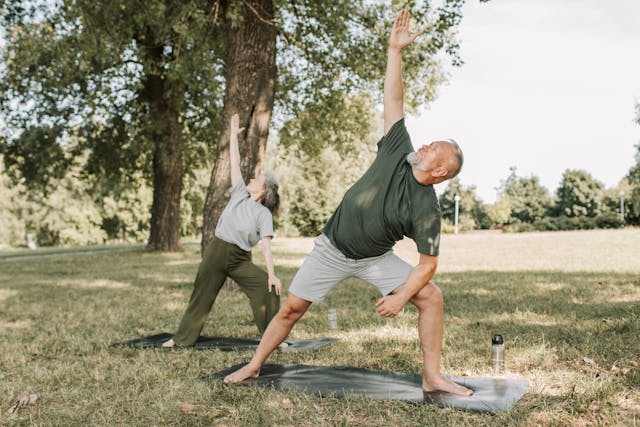Research published in the Annals of Rheumatic Diseases has uncovered that residing near gardens, parks, and other green spaces may positively affect bone density, subsequently reducing the risk of osteoporosis. A noteworthy aspect of this discovery is the role of lower air pollution levels in these green areas in fostering better bone health, according to the researchers’ conclusions.
Osteoporosis is a condition that compromises bone strength, making them more susceptible to fractures. It is a condition that not only leads to chronic pain and reduced mobility but also significantly lowers the quality of life for those affected. With the world’s population ageing rapidly and lifestyle changes occurring, the prevalence of osteoporosis is expected to escalate, making it a pressing health concern globally. The condition arises due to genetic, hormonal, and environmental factors. Although the benefits of green spaces on overall health have been acknowledged, their specific impact on osteoporosis risk remains unclear, particularly concerning genetic susceptibility.
To delve deeper into this issue, an extensive analysis was conducted using data from the UK Biobank, encompassing 391,298 individuals with an average age of 56, just over half of whom were women. This data included detailed records on bone mineral density and factors that could influence these measurements, such as ethnicity, income, education, employment, residential area, alcohol intake, physical activity, smoking status, and diet. Additionally, the study assessed the participants’ genetic risk of osteoporosis through a polygenic risk score. It utilized the normalized difference vegetation index (NDVI), derived from satellite imagery, to quantify the greenery in their living areas. Estimates of exposure to air pollutants like nitrogen oxide (NO2) and particulate matter (PM2.5) were also made based on residential postcodes and data from the ESCAPE project, which examines the long-term health impacts of air pollution exposure in Europe.
Over an average follow-up period of 12 years, 9,307 new cases of osteoporosis were identified, predominantly among older individuals, females, smokers, and those who were retired, with lower education levels and economic disadvantages. However, a clear link was observed between the presence of green space and a reduction in new osteoporosis cases. For each increase in NDVI, indicating more green space, there was a noticeable increase in bone mineral density and a 5% decrease in the risk of developing osteoporosis. The study highlighted that lower levels of NO2 and PM2.5 were significant factors in this association, suggesting that the natural filtration provided by trees and plants might play a crucial role in reducing osteoporosis risk by purging pollutants from the air.
Moreover, being physically active, facilitated by living in greener areas, was associated with a diminished risk of developing osteoporosis. Despite the observational nature of this study, which precludes establishing a direct cause-and-effect relationship, and acknowledging limitations such as the potential inaccuracies in defining the exact amount of green space through NDVI and the generally healthy profile of the study participants, the researchers concluded that this is the first evidence indicating a beneficial link between residential greenness, higher bone density, and a lower risk of osteoporosis. These findings highlight the potential of green spaces in preventing osteoporosis and underscore the importance of urban greening in devising effective prevention strategies.
More information: Tingting Tan et al, Associations of residential greenness with bone mineral density and osteoporosis: the modifying effect of genetic susceptibility, Annals of the Rheumatic Diseases. DOI: 10.1136/ard-2023-224941
Journal information: Annals of the Rheumatic Diseases Provided by BMJ








